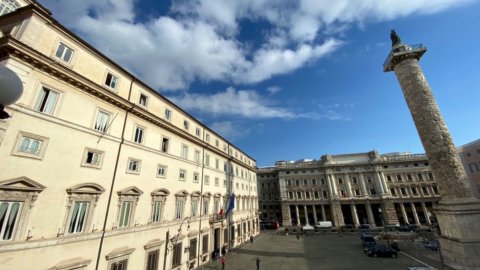Our thesis is that the comparative indices on corruption most commonly used by the media measure the perception of corruption in different countries and can be very far from reality. This thesis is corroborated by two data sets. The first is that of the 2014 Eurobarometer survey, commissioned by the European Union. In the figure on the page, on the horizontal axis there is the usual measure of perceived corruption, on the vertical axis experienced corruption. Perceived corruption is measured through the answer to the question "how much corruption is there in your country?", similar to that of the many surveys that are summarized in the best known of the existing indexes, the CPI (Corruption Perception Index) of Transparency International. To this question, 97% of Italians answered "a lot" or "enough", compared to 76% of the EU average (see table QB5 on page T12 of the Eurobarometer).
As can be seen, almost all Western European countries have lower values of perceived corruption. Many ex-Eastern European countries are also better positioned than Italy. Things change radically, however, when we move on to experienced corruption. The Eurobarometer research asks whether the respondent has been the subject of requests or expectations of bribes in the last 12 months. The question is divided into 15 sectors ranging from health, taxation, customs, private companies, politicians, etc. By aggregating the answers, Eurobarometer obtains an estimate of the "victims of corruption": with a percentage of victims equal to 2%, Italy ranks alongside countries such as France, Spain and the Netherlands and better than Ireland and Austria as well as the average figure EU (which is at 4%).
Of course, answers to questions about direct experience of corruption can also be biased. As they argued Aiello and others on Lavoce.info, it is possible, for example, that the code of silence grows with the increase in corruption. However, it is interesting to note that, as we have seen, the perception of corruption in Italy is also very high according to the Eurobarometer. The figure for Italy is even higher than that for Romania, where, however, the declared "victims" of corruption are as much as 25% of the population. More generally, Italy appears to have a much lower percentage of "victims" than one might expect by linearly interpolating the perception data. Of course it makes no sense to focus on small differences, which are probably not statistically significant. What makes sense is to see that Italy is placed in the group of advanced countries with medium or medium/low experienced corruption, against a very high perception, whereas the countries of Central-Eastern Europe show high corruption both in perception and in experience.
The second data set is that of Transparency International. The results are summarized in the figure shown in this link. Also in this case on the horizontal axis we find the CPI index of perceived corruption (expressed as “100-CPI” so that a higher value of the index indicates a higher value of perceived corruption). On the vertical axis we find experienced corruption, i.e. the percentage of people who answer "yes" to the question: "Have you ever been asked for a bribe in your country?" (see the answer to question Q12 of the survey Global Corruption Barometer 2013, also by Transparency International). In regards to perceived corruption, Italy ranks behind countries such as the United Arab Emirates, Bhutan, Botswana, Rwanda, Namibia, Georgia, Saudi Arabia, Hungary, Ghana, Romania and many others. Instead, it ranks at the top of the rankings in terms of corruption experienced. Again it is not useful to look at small differences according to which Italy would be a little better off than countries like Canada, Norway, Denmark or Germany. The great differences that exist, here too, between developed economies and the generality of emerging or developing countries count.
These data seriously challenge the absolutely depressing image that emerges from perception indices. Our thesis, corroborated by a recent study by the Bank of Italy, is that the latter are strongly influenced by the importance that the media give to corruption, which in turn depends on variables such as freedom of information, the activity of magistrates and the ways in which investigations enter the political game. It would be good to take note of this and make it understood by those who observe us from abroad and must decide whether to invest in our country. We have many problems, but they are less bad than we perceive ourselves.





